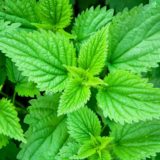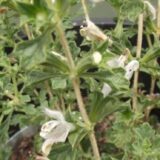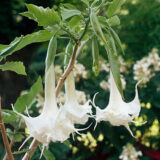Natural Plants Used in Stimulating Teas
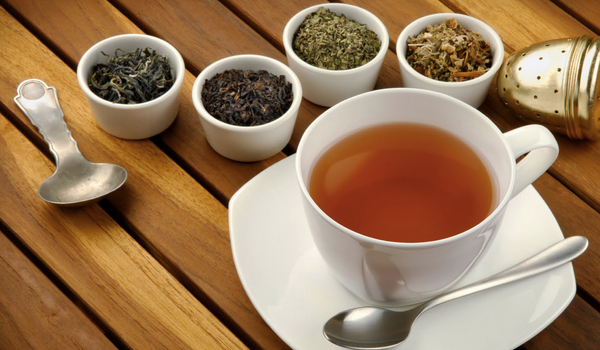
What Natural Herbal Teas Stimulate?
Herbal teas of all types and effects exist. There are herbal teas that have been used for thousands of years, and also fairly modern recipes. Regardless, the ingredients that go into an herbal tea blend is the most important factor to consider in making a stimulating herbal tea. With a little knowledge, one can select the most stimulating herbs and produce a powerful, herbal tea stimulant that rivals or even surpasses coffee. It is possible to create a stimulating tea without using caffeine. It is possible to create a natural herbal tea that is as powerful as prescription stimulants. There are tribes around the world which have used herbal teas as stimulants before war, before intercourse, and during ceremonies and celebrations.
So, which plants can be used as stimulants in herbal teas? What natural sources for caffeine can be used as stimulants in an herbal tea blend? What plants do Indian tribes around the world use to make stimulating tea? There are many stimulating herbs and many recipes for stimulating herbal teas, however, most people like to pick and choose their own herbs to make their own blends. Whether buying individual herbs and making a ‘do-it-yourself’ herbal tea, or buying an herbal tea blend that is already put together, it is wise to understand the plants that are contributing the stimulating effects.
Stimulating, Organic Herbal Tea Herbs and Recipes
This is a full list of stimulating herbs that have been used by tribes and cultures around the world, sometimes for thousands of years. Some of these natural stimulants are more powerful than others. This list of stimulating plants are in no particular order.
 Astragalus
Astragalus
Astragalus is a genus with many species of shrubs which grow abundantly in North America. They are vine-like and grow purple-to-pale colored flowers. Astagalus is a very popular stimulant when brewed into a herbal tea. It is sometimes taken alone, and other times in a blend of other herbs. Although there are many other purposes for Astragalus tea, it is most commonly used for its stimulating properties.
Yerba Mate
Yerba Mate had been most commonly employed among tribes in South America, until recently being marketed worldwide for its use as a social drink. Yerba Mate is a stimulating tea and is sometimes included in green tea blends. It is also known by its scientific name, Ilex paraguariensis. Though there is minimal data, Yerba Mate has been a commonly used weight loss supplement, even as a tea.
Maca Root
Maca is native to the Andes mountains, especially in Peru. It has been regularly used as a medicine by many tribes in South America for centuries, but has recently been marketed around the world as a stimulating plant as well. Maca is used as a sexual stimulant and performance enhancer. It is said to increase endurance and energy. Maca Root is also known as its scientific name, Lepidium meyenii.
Peppermint
Traditionally, peppermint is native to Europe and the Middle East, though it has been cultivated around the world rather successfully in modern times. It has been used as an additive in many herbal tea blends, but also brewed into a tea by itself, specifically to increase energy, stamina, and stimulate. Peppermint and similar mints come from the genus Mentha.
 Rose Hip
Rose Hip
Rose Hip has also been known by Rose Haw. Technically, it is a “rose red” colored fruit produced on the plant, though the entire plant is usually referred to as Rose Hip. It is an extremely common ingredient in stimulating herbal teas. It has been proven to reduce arthritis pain (and helps with inflammation), potentially making one more agile and capable of motor skills. It has been suggested that this reduction in the debilitating inflammatory diseases in all humans as age progresses, can actually help replenish energy levels. Rose Hip’s scientific name is Rosa rugosa.
Camellia sinensis
The leaves of this evergreen shrub are frequent ingredients in herbal tea blends, and also very commonly found as the sole ingredient. Camellia sinensis is native to Asia, India and all tropical and subtropical regions. The tea has a high content of caffeine and creates a stimulating buzz. The tea is such a strong stimulant that it is also popularly used as a social drink.
Cinnamon
Cinnamon has many uses, probably most commonly being as a spice. It has become an important part of many culinary cultures around the world and a reliable export of India, Sri Lanka, Vietnam, China and Indonesia, of where it is native and cultivated. It is used in many herbal tea blends to create better flavor and a spiciness, sometimes even for aroma…however, it is also well known by many tribes and herbal tea enthusiasts for its stimulating effects. Cinnamon is also known by its scientific name, Cinnamomum verum.
Ginseng
All species of Ginseng have proven to have stimulating effects. There are a variety of reasons as to why each Ginseng can improve energy, focus, and/or performance, however, almost all of them are used in their respective regions by natives of the areas, for their stimulating effects. Of the many species of Ginseng, the most popularly used as herbal tea stimulants are: Siberian Ginseng, Peruvian Ginseng, Brazilian Ginseng, and Indian Ginseng.
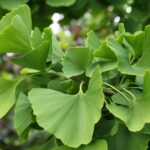 Ginkgo Biloba
Ginkgo Biloba
Although scientific studies have yet to prove anything, many medicine men, shaman, tribes and cultures around the world swear by Ginkgo Biloba’s ability to improve focus and energy. Ginkgo is sometimes used as a sexual performance enhancer. It is very common to find Ginkgo Biloba in herbal teas being used as stimulants.
Ginger
Ginger has a long history in the folk medicine of many cultures around the world, though it is native to India and Asia. It has historical significance in Ancient Greece, Ancient Rome, and is one of the first imports to Europe coming from Asia. Though it was originally used as a spice in Europe, it has been known in many tribal cultures as a stimulating herbal tea. Ginger is also known by its scientific name, Zingiber officinale.
Cayenne
Cayenne pepper is mostly known for its culinary influence as a spice and cooking ingredient. It is native to Brazil and South America, though has been cultivated in other tropical and temperate zones. It has a traditional use in stimulating herbal teas in some Brazilian tribes. Cayenne is also known by its scientific name, Capsicum annuum.
Ashwagandha
Ashwagandha is a nightshade and is significantly used in Ayurveda medicine (medicine from the cultures of the subcontinent India). Ashwagandha is known to provide a steady supply of energy in a slow-rising stimulation-like effect. Ashwagandha is also known by its scientific name, Withania somnifera, as well as common names Poison Gooseberry and Winter Cherry.
Stinging Nettle
Nettle leaves and flowers are dried and used to brew an herbal tea. It is used by many tribes and cultures, especially in Austria to help improve the cardiovascular system and to help treat inflammation and rheumatism. These increases in health can promote more energy and provide a stimulating effect. Stinging Nettle is also known by its scientific name, Urtica dioica.
 Gotu Kola
Gotu Kola
Gotu Kola is native to Asia, especially in the wetland regions. It has culinary and medicinal purposes in many Asian cultures. Although it is present in many stimulating herbal teas, it is most likely added for its boost to mental clarity and focus…as it does not contain any caffeine and is not a stimulant in itself. Still, the improvement to mental clarity makes it worth mentioning among the herbal tea stimulants, and it is an excellent additive to any herbal tea blend meant to act as a stimulant. Gotu Kola is also known by its scientific name, Centella asiatica.
Last Words: Herbal Tea Stimulants
Finding the right ingredients to make the perfect, stimulating herbal tea, only requires a little understanding of the plants themselves. These plants are excellent sources for energy, focus, and overall stimulation. Many of these plants have rich history of being a natural stimulant and many of them are great substitutes for caffeine itself. A lot of the herbal teas that are valued for as a natural stimulant today employ at least one of these plants, if not many of them. Herbal tea is also often considered healthier on the body than coffee and synthetic stimulants.
Disclaimer: BotanicalShaman.com authors are not medical professionals and cannot provide medical advice. This article is for informational purposes only, and to help people find natural sources of energy that have been well-documented as being used by many cultures around the world.
